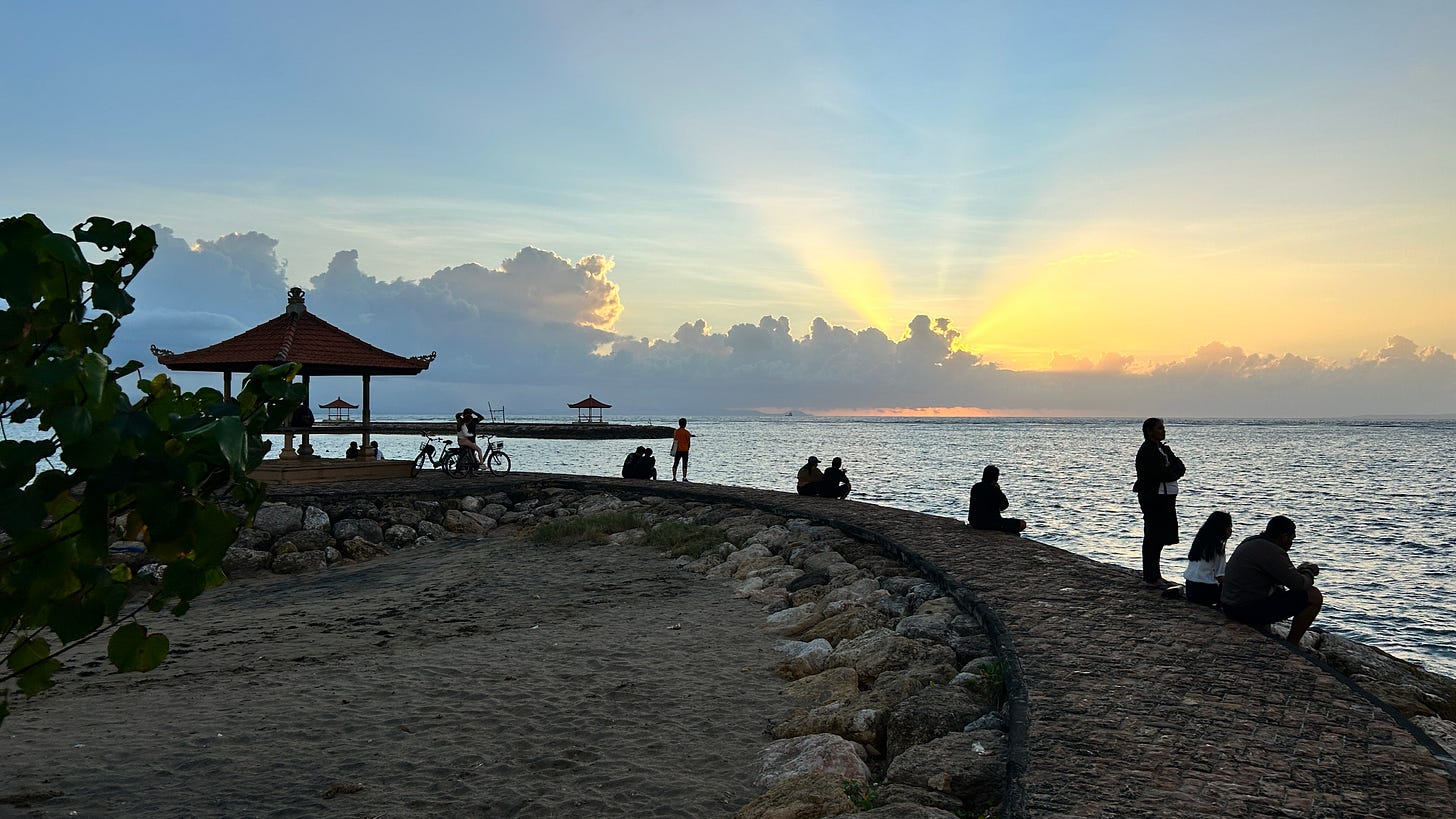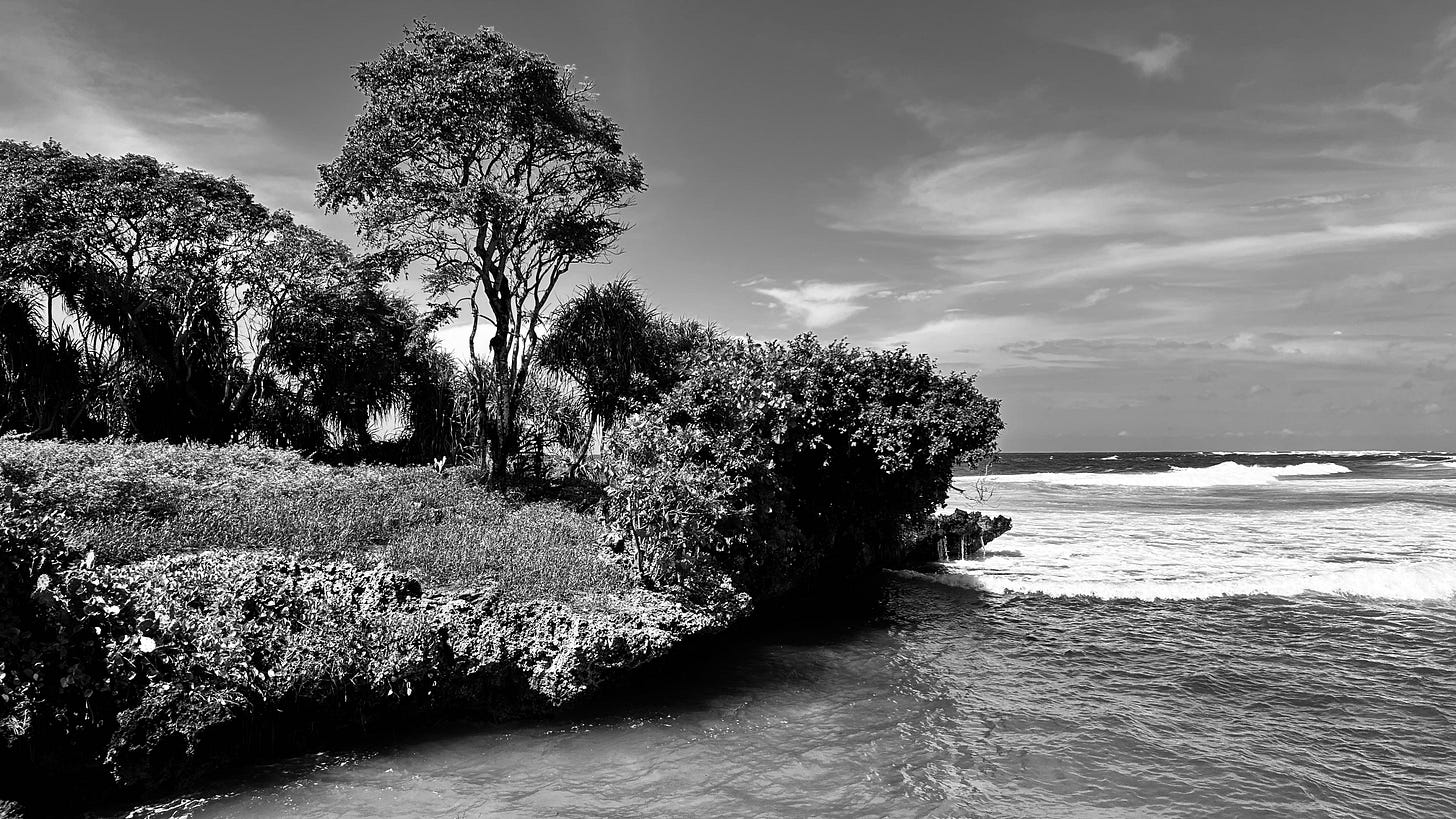String Theories
The Musicality Table Of Contents; Music From Indonesia; The Scene in Durham, NC; The SteelDrivers At 20; The Journey of Larry & Joe

Welcome to y’all who’ve joined this String Theories community since last month. Thanks for showing interest in what this Musicality thing might be about. To reiterate, I’ll be releasing Musicality For Modern Humans: How To Listen Like An Artist on or around Oct. 10 through the Sager Group. This newsletter will be the hub for developments on the journey to and past publication.
My hopes for the book are 1) to inspire listeners to widen their attention to new styles of music and become fans of some of the remarkable younger musicians working today in the fields of composed, improvised, and progressive instrumental music and 2) to spark conversations in the music business and at music schools about how we all might reintroduce music appreciation and audiophilia to mainstream culture. I want to know what you all think about these issues. What does America’s musical diet look like from where you sit? And who do you think has potential to influence large audiences and level up the national dialogue about music? I’m genuinely curious.
I didn’t plan Musicality as a text book or a course, but it took on a bit of that shape as it got organized. So here, I’d like to share the book’s Table of Contents, because I think it offers a clear map of what readers will encounter. It’s divided into six parts that build on each other and point in a direction from the abstract to the instructive to the day-to-day practical. I grew to really like this structure and I believe it has potential as a course curriculum. So I submit the question: Can a more musical way of life and a deeper love of the art form be taught? I want to critique and stress-test my model. It’s offered as one but hardly the last word in a new method for music growth.
PART I — RESET
1. Making Overtures — Listening for > listening to
2. Sound, Not Songs — Just for now
3. Get Over Yourself a Minute — How suspending judgment supercharges your taste
4. Beyond Popular — A new map of music
PART II — HEARING
5. From the Sound Up — Your laudatory auditory system
6. Watch Your Tone — A pitch for intonation
7. Carrying a Tune — The marriage of melody and harmony
PART III — HARMONY
8. Chords and Their Changes — Harmonic structure, progression, and resolution
9. Dissonance Is a Drug — Harmony and its acquired tastes
10. Timbre — The umami of music
11. Good Vibrations — The resounding power of resonance
PART IV — GROOVE
12. First Time — A White kid discovers Black rhythm
13. Second Time — A brief history of musical time
14. Third Time — The call of the drum
PART V — CONCERT
15. Knowing the Score — The parts and the whole
16. Out of Nothing, Something — The elusive flow state of improvising
17. Conductivity — Who’s in charge and how?
18. Refinement — Interpretation, expression, and connection
19. Where Am I? — How music’s forms guide us
PART VI — PRACTICE
20. Your Musical Diet — Genres, formats, and choices
21. Your Instrument — Musicality embodied
22. Listening in Real Life — Spaces, systems, and venues
23. The Media and the Message — The story of music journalism
24. Finale — What we bring to music
Part 1: It’s called Reset because in my years as a reporter I’ve learned that our industries and institutions are not aligned toward a musically smarter America, and we’ve been led down some blind alleys. The non-profit sector does a good job with music education. But it’s overwhelmed by a corporate ecosystem around entertainment that hides many worlds of music from us. I advocate a ‘Sound Not Songs’ point of view as a thought experiment in how our musical curiosity might be directed. I point out that we’ve been conditioned to have extremely quick opinions about music, and that’s not great. I have a bit of a rant against the post MTV culture that fostered a fast food mentality around music. I propose a new triad of musical modes to replace our genre-centric divisions. I try to break down the biases and assumptions and anxieties that we the people have developed since the advent of Big Radio and a visually dominated culture. I think it’s important to strip down to bedrock.
Part 2: On the bedrock, I want to build a common understanding about how we perceive music, grounded in the remarkable psycho-acoustic research of the 21st century. I keep the science simple while basking in the amazing-ness of our aural apparatus. I draw on inspiration from the book Music, The Brain and Ecstasy by Robert Jourdain. When I read it in the early 1990s, it was like learning we have (but do not appreciate) a superpower - a high-tech radar that scans the sound world for super subtle signals. It changed how I listen. I’d not thought about how badass it is that our brain can distinguish easily between the music made by a band on stage and the sounds of the conversations around me. I also talk about pitches and tones and the building blocks of music and why we have octaves and stuff like that. Chapter 5 is a transition from melody into the world of chords and progressions.
Part 3: It’s called Harmony, but it goes beyond that. Finding a natural order here was hard because Timbre, one of my favorite chapters, isn’t about notes or chords, but it’s hugely important to how we hear and love music and it’s made out of scientific stuff - frequencies and harmonics. I sort of jammed them together. This section is also the most technical, but I try to be like a good science, economics or sports reporter by translating the complexity into common sense principles. I champion intervals over notes, and I go deep on the subject of dissonance, one of my most central arguments. Chapter 11 emerged I think from outtakes from the Timbre chapter. I discovered that I personally feel much of my connection to music through the reality of vibrations and the magic of resonance. It describes how all the classes of instruments generate sound and what makes them right for different settings.
Part 4: Rhythm is the element of music that anchors me most. It’s sacred and ancient, and I try to treat it with the respect it deserves. I had fun writing these three chapters and I was surprised by the way they ordered themselves. I go through basic theory, but very much in service of explaining syncopation, the essential rhythmic feature that gave our country and culture its heartbeat, thanks to the foundations brought to us through the African American experience. Chapter 13 is by far the most historical chapter in the book, walking us through the evolution of American grooves through a few dozen important drummers. I tie jazz to bluegrass, because that’s how I roll. Chapter 14 offers ways to listen to drummers and know if you’re getting the real deal or not. Readers are invited to pick stuff up and start making beats.
Part 5: I was having trouble naming this part, especially with the one word formula I’d settled on, because these five chapters are quite diverse in subject matter. But they do all work together to make a coherent, unified experience of musicality in a life. Hence the double entendre of “Concert.” Chapter 15 is most explicitly about unification, even as it goes into detail about the power of disassembling music into its component parts when we listen. “The parts and the whole” is one of my most original frameworks for leveled up listening. At least I’ve never heard it directly addressed. Then, chapters on improvising, on conducting and group leadership, on phrasing and expression, and on musical form. Whether these are in the best order I have no idea.
Part 6: Another nice word struck me when I considered the final five chapters, because I realized they all had to do with putting the music theory lessons and timbral consciousness from the book into “Practice”. And practice is what we need to do to perform music, something addressed in Chapter 21. I have a chapter about genres, gatekeepers, and the life-long struggle to define and refine one’s own musical taste in a noisy world. I talk about music journalism, including my personal story, as a way of guiding readers toward a good information diet as they pursue an evolving musical diet. And I get to address what I think is a weird anxiety around audiophiles and hi-fi. Where, when and how we listen can’t just be left up to whims. The more we know about the live and home systems that deliver us music, the more authentic experiences we can have. Then I have a concluding set of thoughts about where we are today in our musical culture. You’ll just have to see.
If you know any music educators, from conservatory professors to local folks giving music lessons to kids, please share this with them. I’m hoping for feedback from people who are in the trenches. I lack music education experience and feel that acutely as I throw out this set of ideas.
SOUNDS FROM INDONESIA
In June, I had a nice adventure thanks to the initiative of my globe-hopping wife Taylor. She and our daughter Lu returned to Chengdu, China in May to further build their family business. I’d not gone to Asia since well before the pandemic, and I wanted to see some new places. So did Taylor. So while Lu visited Chongqing, she and I split a long week between Singapore and Bali. I posted photos from both places on my Facebook page. Here I want to share my brief exposure to the music of Indonesia.
Our resort was tuned into Balinese culture, with a small shrine in the courtyard and other touches, like hiring local musicians. These guys were everywhere, playing breakfast, afternoon, and evening. Their instrument is a bamboo xylophone called a rindik, and it’s apparently an ever-present sound on the island, for all occasions sacred and secular. Its woody pulse was serene and harmonically sweet. Songs and themes flowed from one to another smoothly. It was the nicest kind of ambient sound but I spent a long time listening to them in a focused way, because the mix of pulse and pentatonic harmony was so beautiful and ideal for the seaside setting.
We didn’t buy tickets to this but the resort held a barbecue buffet with a performance by traditional dancers and gamelan. I thought gamelan was an instrument, but it applies to a school of Indonesian music and the groups that play it. They include a variety of drums, gongs, and metallophones played with hammers, like the ones you see here, called bonang. These did not make tones nearly as sweet as the rindiks! Gamelan music uses scales that have nothing to do with our western tempered scale, and the results sound pretty clashy and dissonant. This world of music became a hot thing in the 20th century among contemporary western composers looking for new frontiers. Its influence made its way into the music of Steve Reich, John Cage, Pierre Boulez and many others. It’s an acquired taste. We were able to sneak in behind the buffet and catch the band and dancers for a few minutes, which was enough! Glad to hear the local sound though.
RECENT WORK
This first piece is a big deal for me, as it’s my first music city profile in a while, with many voices and scenes. And it’s about my hometown, which I found looking and sounding great in 2025. Rhiannon Giddens established her Biscuits & Banjos festival this year, and that became the perfect anchor for a profile of the Bull City and its surprising role in the story of today’s old-time music.
As always, click the image of the story to link to the full piece at its source.
I’ve been covering and enjoying the SteelDrivers since they formed twenty years ago. On their new album Outrun, they’re as passionate and soulful and dark as ever.
This special episode of The String is a kind of supplement to the Durham feature, because NC native Joe Troop moved to Durham during the pandemic and makes it his base now. During the slow time he met a master traditional musician from Venezuela and put together a bluegrass fusion duo that’s one of the most compelling acts on the roots circuit now. Larry & Joe are directly impacted by the new climate of fear in our Latin communities, and that makes their story even more timely and moving.







